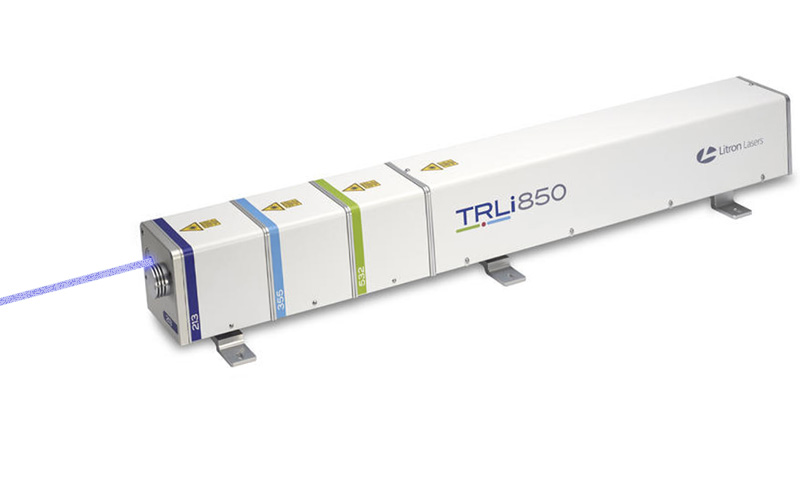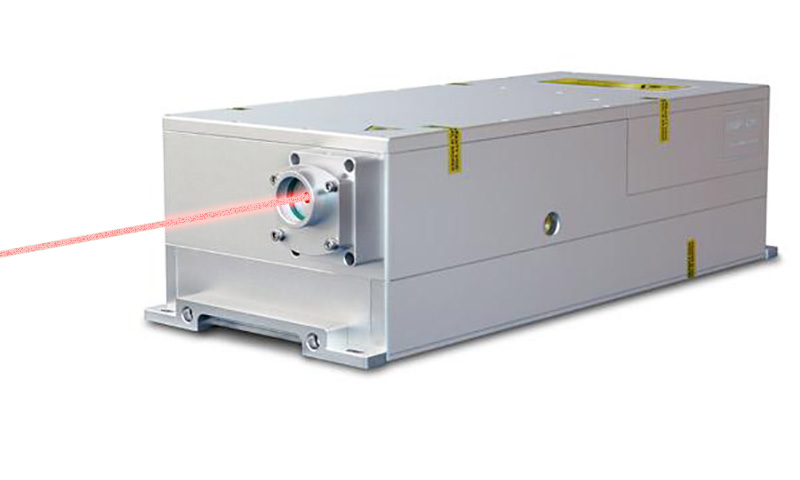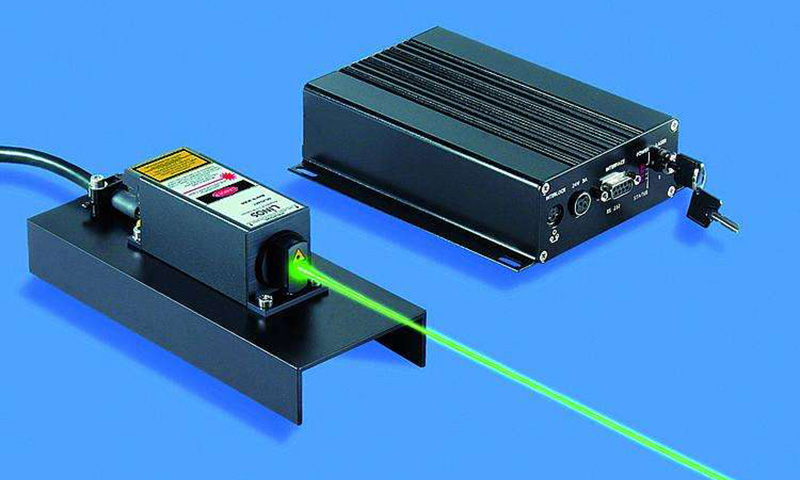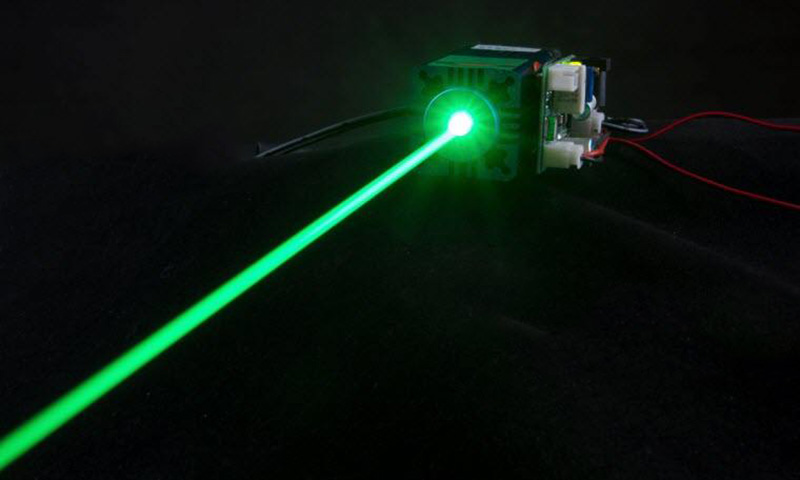What are the types of lasers?
There are two ways to classify lasers:
According to the particle structure of active medium, it can be divided into atom, ion, molecule and free electron laser. The laser produced by He-Ne laser is emitted by Ne atom, and the laser produced by ruby laser is emitted by chromium ion. There are also carbon dioxide molecular lasers, whose frequencies can vary continuously. And it can cover a wide frequency range.
It is classified according to the material state surface of the activated medium. It can be divided into gas, liquid, solid and semiconductor lasers. All kinds of lasers have their own characteristics.
Gas laser
Gas lasers use gas or vapor as working substance to produce lasers. It consists of three main parts: the active gas in the discharge tube, the resonator composed of a pair of mirrors and the excitation source. The main excitation modes are electrical excitation, pneumatic excitation, optical excitation and chemical excitation. Among them, electric excitation is the most commonly used. Under appropriate discharge conditions, gas particles are selectively excited to a certain high energy level by means of electron collision excitation and energy transfer excitation, which resultsthe number of particles is reversed with a certain low energy level, resulting in stimulated emission transitions. The most common are He-Ne laser, argon ion laser, carbon dioxide laser, He-Cd laser and copper vapor laser.

Liquid laser
Liquid lasers are also called dye lasers because the active substance of these lasers is a solution formed by dissolving some organic dyes in liquids such as ethanol, methanol or water. Lasers of different wavelengths (in the visible range) can be obtained by using different dyes. Dye lasers generally use lasers as pumping sources, such as argon ion lasers. The working principle of liquid laser is complex. In order to stimulate them to emit lasers, high-speed flash lamp is usually used as laser source, or other lasers emit very short light pulses. Lasers emitted by liquid lasers are of great significance for spectral analysis, laser chemistry and other scientific research.

Solid-state laser
In 1960, the ruby laser invented by T. H. Mayman was a solid-state laser and the first laser in the world. Solid-state lasers are generally composed of laser working substance, pump system, concentrating cavity, resonator mirror and power supply.
In solid-state lasers, the light radiated by the pumping system passes through the focusing cavity, so that the active particles in the solid working substance can effectively absorb the light energy, so that the number of particles in the working substance can be inverted, and the laser can be output through the resonant cavity.
As shown in the figure, the basic structure of solid-state lasers (some of which are not shown). Solid-state lasers are mainly composed of five parts: working substance, pumping system, concentrating system, optical resonator and cooling and filtering system.
The solid working substance used in this kind of laser is made by mixing metal ions which can produce stimulated emission into crystals. There are three kinds of metal ions which can produce stimulated emission in solids: _metal ions (such as Cr3+); _most lanthanide metal ions (such as Nd3+, Sm2+, Dy2+); _actinide metal ions (such as U3+). The main characteristics of these metal ions doped into the solid matrix are: wide effective absorption band, high fluorescence efficiency, long fluorescence lifetime and narrow fluorescence spectrum lines, which make it easy to produce population inversion and stimulated emission. The main artificial crystals used as crystal matrix are corundum (NaAlSi2O6), yttrium aluminium garnet (Y3Al5, O12), calcium tungstate (CaWO4), calcium fluoride (CaF2), yttrium aluminate (YA lO3), lanthanum beryllium (La2Be2O5), etc.
High quality silicate optical glasses, such as barium crown glass and calcium crown glass, are used as glass substrates. Compared with crystal matrix, the main characteristics of glass matrix are easy preparation and easy access to large-scale high-quality materials. The main requirements for crystals and glass substrates are that they are easy to doped with luminescent metal ions which play an active role; have good spectral properties, optical transmittance characteristics and high optical (refractive index) uniformity; and have physical and chemical properties suitable for long-term laser operation (such as thermal properties, anti-deterioration properties, chemical stability etc). Crystal lasers are typically represented by ruby (Al2O3:Cr3+) and Nd-doped yttrium aluminium garnet (YAG:Nd3+). Glass lasers are typical of Nd glass lasers.
 DPSS laser, a diode-pumped solid-state laser, is a new type of laser with the fastest development and wider application in the world in recent years. This type of laser uses semiconductor lasers with fixed output wavelength to pump laser crystal instead of krypton lamp or xenon lamp, which has made a new development and is called the second generation laser. The main internal components are semiconductor laser tube LD, laser oscillating crystal, wavelength conversion crystal and semiconductor cooler. Laser Diode provides energy excitation for laser oscillation crystals. Laser oscillation and wavelength conversion crystals convert infrared invisible laser into visible laser such as green laser with 532 nm wavelength.
DPSS laser, a diode-pumped solid-state laser, is a new type of laser with the fastest development and wider application in the world in recent years. This type of laser uses semiconductor lasers with fixed output wavelength to pump laser crystal instead of krypton lamp or xenon lamp, which has made a new development and is called the second generation laser. The main internal components are semiconductor laser tube LD, laser oscillating crystal, wavelength conversion crystal and semiconductor cooler. Laser Diode provides energy excitation for laser oscillation crystals. Laser oscillation and wavelength conversion crystals convert infrared invisible laser into visible laser such as green laser with 532 nm wavelength.
Semiconductor laser
Semiconductor lasers are laser diodes, which are recorded as LD. It was invented in 1960 by H. _. Basov, a former Soviet scientist. Semiconductor lasers usually consist of P layer, N layer and active layer forming double heterojunction. The light emission of semiconductor lasers is based on the principle of stimulated radiation of light. Most of the electrons in the state of population inversion distribution will launch photons synchronously when excited by external incident photons, and the stimulated photons and incident photons not only have the same wavelength, but also have the same phase and direction.In this way, the strong emission light is obtained by the weak incident light excitation, which plays the role of light amplification. However, optical oscillation can not be formed only with optical amplification function. Just like the oscillator in the electronic circuit, only the amplification function can not produce electric oscillation, and the positive feedback circuit must be designed to compensate the power lost in the circuit by the amplified power. Similarly, in the laser, the feedback concept of the electronic circuit is borrowed, and the amplified light is partially fed back to further amplify, generate oscillation, and emit laser light. The instrument used to amplify and feedback light is called optical resonator.

Common working substances are GaAs, CdS, InP and ZnS. There are three excitation modes: electric injection, electron beam excitation and optical pumping. Semiconductor laser devices can be divided into homojunction, single heterojunction and double heterojunction. Homojunction lasers and single heterojunction lasers are mostly pulse devices at room temperature, while double heterojunction lasers can work continuously at room temperature.
The advantages of semiconductor lasers are small size, high coupling efficiency, fast response speed, wavelength and size adapted to fiber size, direct modulation and good coherence.
The laser instruments that semiconductor lasers are widely used today are red laser and green laser.
Semiconductor Light Emitting Diode
Semiconductor light-emitting diodes are similar to semiconductor lasers. They are also PN junctions, which emit light by injecting electrons into PN junctions with external power supply. Semiconductor light emitting diodes (SLD) are recorded as LED. They are composed of P layer formed by P type semiconductor and N layer formed by N type semiconductor, and active layer formed by double heterostructure in the middle. The active layer is the luminous region, and its thickness is about 0.1-0.2 μm.
Semiconductor light emitting diodes have less stringent structural tolerances than lasers and no resonant cavity. Therefore, the light emitted is not laser, but fluorescence. LED is a device with positive voltage. Under the action of positive bias, the electrons in N region will diffuse in the positive direction and enter the active layer, and the holes in P region will diffuse in the negative direction and enter the active layer. Electrons and holes entering the active layer are enclosed in the active layer due to the effect of heterojunction barrier, thus forming the inversion distribution of the number of particles. These electrons, which are reversed in the number of particles in the active layer, will generate spontaneous emission when they are combined with holes through transitions. Semiconductor light emitting diodes are widely used in optoelectronic systems because of their simple structure, small size, small working current, convenient use and low cost.




